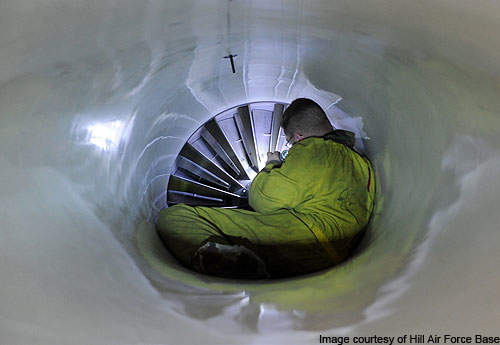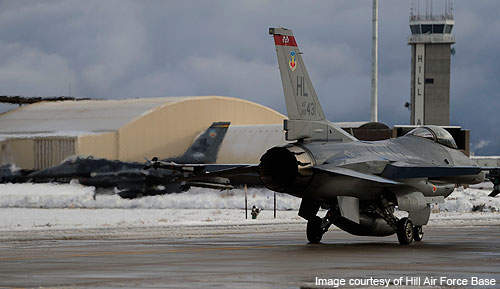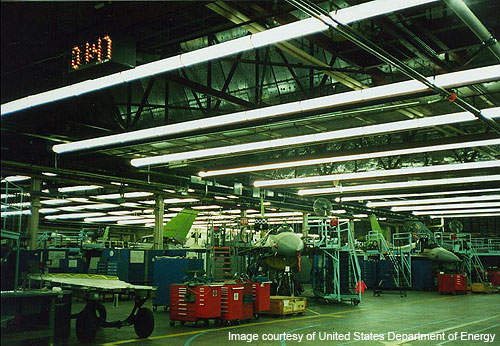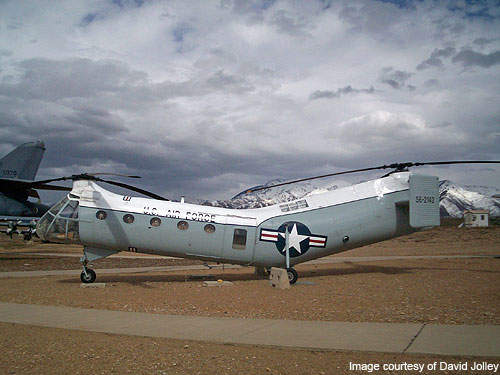Hill Air Force Base (IATA code: HIL) is a military air force base situated 48km north of Salt Lake City, Utah, US. HIL is owned and operated by the United States Air Force (USAF).
It was built on a 6,698-acre site. It can repair, modernise and renovate aircraft’s landing gear, wheels and brakes, rocket motors, air munitions and guided bombs, imagery payload, training equipment, avionics, instruments, hydraulics and software.
Approximately 22,000 military personnel reside at the base.
History of Hill Air Force Base
The proposal to build the Hill Air Force Base in Salt Lake City was made in 1934 by the US Army’s Air Mail Experiment. The Army Air Corps identified the site near Ogden as the desirable place for the base.
The US Government embarked $8m in July 1939 for building an Ogden air depot. The depot was renamed as Hill Field in December 1939 in the honour of Major Ployer Peter Hill, who died while test flying the B-17 Flying Fortress bomber prototype. The Hill Field was officially inaugurated in November 1940. It was a key player of maintenance and supply in December 1941 during World War II.
The Hill Field was renamed the Hill Air Force Base in February 1948. The field testing of the UH-1H Iroquois helicopter was carried out at the base in 1971. A 30-acre Hill Aerospace Museum was constructed in 1981.
A battle damage storage and training facility was built at the base in 2007.
Design and construction of the military air force base
The Falcon Hill Project (FHP) is a $1.5bn mixed-use development being built by a public-private venture in 550 acres of land within the base. Sunset Ridge Development Partners is responsible for the finance, construction and maintenance of the eight million square feet of office space, restaurants and hotels under the FHP.
Construction began in 2010 and four buildings were constructed by 2014.
HHI Corporation built a 35,697ft² single-storey child care development centre at the base by destroying six buildings covering an area of 35,731ft². The facility is equipped with a fire protection system, emergency detection system, CCTV system, isolation rooms, kitchen area, storage rooms, administrative space and playground area.
A 22,000ft² F-22 hangar at the base was renovated by constructing infrastructure compatible to repair and overhaul F-22 aircraft. A single-storey munitions maintenance facility was also built to follow the Department of Defence’s anti-terrorism or force protection requirements.
R&O Construction built a new 76,182ft² office building as part of the FHP at Hill Air Force Base.
Garrison facilities
The HIL serves as headquarters for the Ogden Air Logistics Centre (O-ALC), 75th Air Base Wing (75 ABW), 84th Combat Sustainment Wing, 309th Maintenance Wing, 508th Aerospace Sustainment Wing, 526th ICBM Systems Wing, 388th Fighter Wing and 419th Fighter Wing (419 FW).
The 75 ABW is organised into 75th Civil Engineering Group, 75th Mission Support Group and 75th Medical Group. It can execute logistics support, civil engineering, mission support, security and medical operations for the O-ALC and consociate groups.
The O-ALC renders engineering and logistics support for F-16 Fighting Falcon, A-10 Thunderbolt Peace Maker and Minuteman III intercontinental ballistic missile. It repairs, overhauls and engineers aircraft, engines, missiles, software, avionics and accessories.
The 419 FW is the maiden air force reserve wing operating F-16 Fighting Falcons. It is classified into 419th Operations Group, 419th Maintenance Group and 419th Mission Support Group.
Other Squadrons headquartered at the base include 4th Fighter Squadron, 34th Fighter Squadron, 421st Fighter Squadron, 729th Air Control Squadron, 388th Range Squadron, 388th Operations Support Squadron, 466th Fighter Squadron and 67th Aerial Port Squadron.
Air facilities at the Utah complex
The Hill Air Force base has a single 4,117m-long runway surfaced with Porous European Mix (PEM).
It can accommodate a variety of aircraft, including F-16 Fighting Falcon, C-130 Hercules, A-10 Thunderbolt II, B-17 Flying Fortress, F-22, P-47 Thunderbolt, P-61, B-24 Liberator, B-29 Superfortress and F-4 Phantom II.
The HIL renders logistical support, temporary lodging, accommodation, education, recreation, a base chapel, medical care and child care facilities.
US Defence Sector – Market Opportunity & Entry Strategy, Analyses and Forecasts to 2015
Detailed analysis and forecasts of the US defence market are available from our business information platform Strategic Defence Intelligence. For more information click here or contact us: EMEA: +44 20 7936 6783; Americas: +1 415 439 4914; Asia Pacific: +61 2 9947 9709 or via email.







